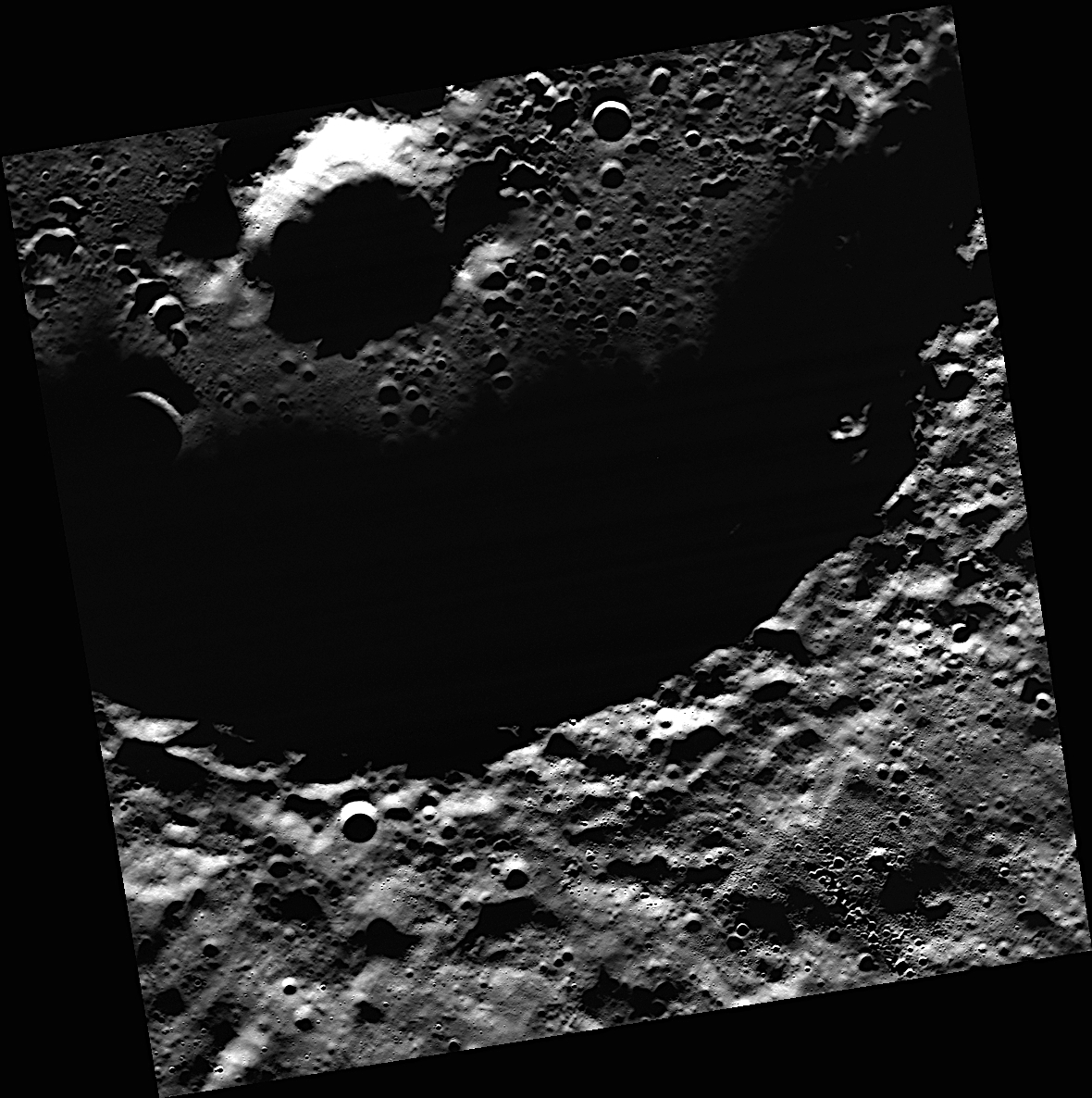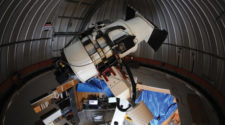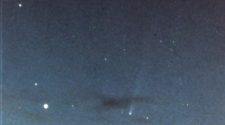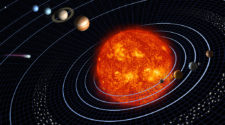OCTOBER 11, 1983: The InfraRed Astronomical Satellite (IRAS) spacecraft discovers the “asteroid” now known as (3200) Phaethon. Phaethon had the smallest perihelion distance of any asteroid known at the time and was soon found to be traveling in the same orbit as the Geminid meteors, suggesting it may be their parent object and thus may also be a defunct comet. Since then it has occasionally exhibited small bursts of cometary activity when near perihelion. The linkage between comets and meteor showers, and cometary activity within asteroids, are subjects of future “Special Topics” presentations.
OCTOBER 12, 1892: American astronomer Edward Barnard at Lick Observatory in California takes a 4-hour-long exposure of a Milky Way starfield, and later notices the trail of a 12th-magnitude comet on the resulting photograph; this would be the first comet ever discovered via photography. Barnard’s comet was found to be periodic, but was lost until rediscovered by Andrea Boattini with the Catalina Sky Survey in 2008; it is now known as Comet 206P/Barnard-Boattini.
OCTOBER 12, 1950: At a meeting of the National Academy of Sciences, American planetary scientist Gerard Kuiper proposes the existence of a population of “protocomets” in the solar system beyond Neptune; the paper was published the following year. The idea of a “Kuiper Belt” lay dormant for the next three decades before being revived in 1980 by Uruguayan astronomer Julio Fernandez, and its existence was confirmed a little over a decade later. The Kuiper Belt is the subject of a previous “Special Topics” presentation.
OCTOBER 13, 902: Observers in Europe, Egypt, and elsewhere see a strong meteor “storm,” wherein “stars fell like rain,” appearing to come from the constellation Leo. This is the first recorded incident of the Leonid meteor shower, which has produced equally strong “storms” on subsequent occasions. The Leonids are associated with Comet 55P/Tempel-Tuttle, and the link beyond comets and meteor showers is the subject of a future “Special Topics” presentation.
OCTOBER 15, 2003: The LONEOS program in Arizona discovers a fast-moving asteroid which is soon found to be identical to the long-lost asteroid Hermes, which had passed extremely close to Earth in 1937 but only followed for four days. Hermes has now been numbered (69230), and it is discussed in the Week 2 “Special Topics” presentation.
OCTOBER 15, 2014: Scientists associated with NASA’s MESSENGER mission report that MESSENGER has imaged water ice in the crater Prokofiev near Mercury’s north pole. Water ice in Mercury’s polar regions had been suspected in radar data as early as 1991 and confirmed by MESSENGER data in 2012, but this was the first report of direct images of such ice. The existence and significance of water ice on Mercury are discussed in a previous “Special Topics” presentation.

OCTOBER 15, 2015: A team of scientists led by Tabetha Boyajian (then at Yale University) and which included “citizen scientists” announces their discovery that, in data taken with the Kepler Space Telescope, the 12th-magnitude star KIC 8462852 – now informally referred to as “Boyajian’s Star” – has been undergoing large and irregular drops in brightness. One of the potential explanations for these brightness drops is an orbiting swarm of “exocomets,” and this is discussed in a previous “Special Topics” presentation.
OCTOBER 16, 1982: CalTech graduate student David Jewitt and Palomar Observatory staff astronomer G. Edward Danielson recover Comet 1P/Halley on its 1986 return with a CCD attached to the 5.1-meter Hale Telescope at Palomar. This was the first time that a CCD had been used to recover a comet. Comet Halley, then at a heliocentric distance of just over 11 AU, was a little less than 3½ years away from perihelion at the time and appeared as a stellar 24th-magnitude object. The 1986 return of Comet Halley is a previous “Comet of the Week.”
OCTOBER 17, 1906: August Kopff at Heidelberg Observatory in Germany discovers the asteroid now known as (617) Patroclus. Patroclus, now known to have a binary companion, was the second “Jupiter Trojan” asteroid to be discovered and is scheduled to be visited by NASA’s Lucy mission in 2033. Lucy is discussed in a previous “Special Topics” presentation, and Trojan asteroids are the subject of this week’s “Special Topics” presentation.
OCTOBER 17, 1983: A team led by Fred Gillett and Hartmut Aumann announces that the bright star Vega exhibits a strong excess of infrared emission in data taken by the InfraRed Astronomical Satellite (IRAS) spacecraft, indicating that it is accompanied by a disk of dusty material. Subsequent studies of the Vega dust disk suggest that it may primarily be the result of collisions between bodies – as is much of the dust in our solar system – but some of it may be the remnant of a planet-forming disk. These disks and the process of planet formation are the subjects of a future “Special Topics” presentation.
OCTOBER 17, 2020: The main-belt asteroid (45666) 2000 EX91 will occult the 6th-magnitude star 52 Orionis. The predicted path of the occultation crosses southern Greenland, northeastern Iceland, central Europe including northeastern Germany, far western Czech Republic, eastern Austria, eastern Slovenia, central Croatia, central Bosnia-Herzegovina, central Montenegro, central Albania (just east of Tirana), western Greece, and far western Crete; and north-central Africa including west-central Egypt, northeastern Sudan (just east of Khartoum), western Ethiopia, east-central Kenya, and central Madagascar.
More from Week 42:
Comet of the Week Special Topic Free PDF Download Glossary
Ice and Stone 2020 Home Page


